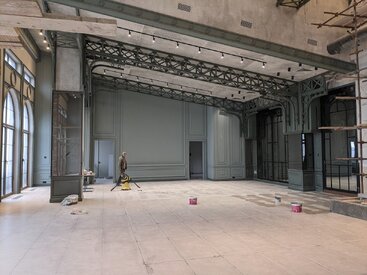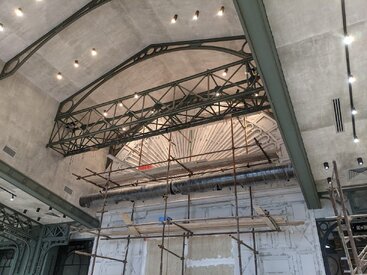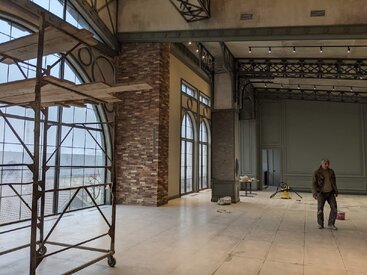This was taken in a large venue 23m left to right and 17m from front to back, with a vaulted cieling that rises to the rear up to 9m in the middle at its highest part at the back although the side cielings(on teh left and right of the middle) starts from 3m and ends up about 5m, still overall about 3000m3 hall. The back wall is all glass so I suspect the bass just travels passed it and the celiing is a drywall with 60cm to the above concrete ceiling which will act in some way as some membrane or resonant absobrer so I did expect that the bass RT60 would be relatively decent.
I just want to firstly check if the graph is correct? There was no anomolies in the frequency graph and I did estimate 4 to 6 sec but the T20 and T30 are really weird as they end up at 0ms at the middle frequencies so I just want to make sure that the measurement looks correct.
My second question is what do I use to figure out what targeted absorbtion is needed? Meaning, if I want to get down to 1.5 sec which RT60 do I use? As Topt already has 60hz around 1.8 sec so I will not need to absorb too much at that frequency of course this is obvious. Anyway, is Topt the what I am looking at?
I'll admit that I haven't quit yet understood T20 or T30 or Topt for that matter and only realised that the filtered ETC gives a an average of the RT60 but I just need a simple way to know what graph I use to base my targeted absorbtion when I use a online calculator to figure out how much absorbtion I need. I want to fill out the RT60 on the calculator and need to know which RT60 graph to use.

I just want to firstly check if the graph is correct? There was no anomolies in the frequency graph and I did estimate 4 to 6 sec but the T20 and T30 are really weird as they end up at 0ms at the middle frequencies so I just want to make sure that the measurement looks correct.
My second question is what do I use to figure out what targeted absorbtion is needed? Meaning, if I want to get down to 1.5 sec which RT60 do I use? As Topt already has 60hz around 1.8 sec so I will not need to absorb too much at that frequency of course this is obvious. Anyway, is Topt the what I am looking at?
I'll admit that I haven't quit yet understood T20 or T30 or Topt for that matter and only realised that the filtered ETC gives a an average of the RT60 but I just need a simple way to know what graph I use to base my targeted absorbtion when I use a online calculator to figure out how much absorbtion I need. I want to fill out the RT60 on the calculator and need to know which RT60 graph to use.

















